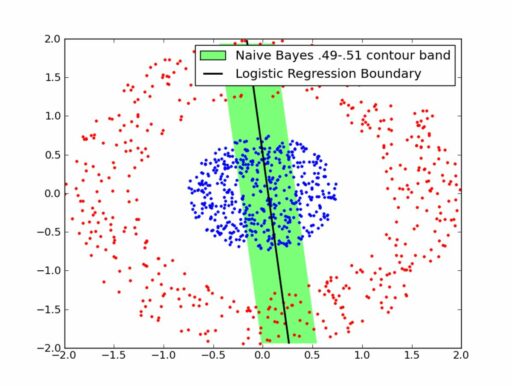Table of Contents
Dive into the intricacies of the Data Link Layer with our comprehensive exploration of FlexRay’s packet layout, network topology, and the impact of switching delays on network performance. Learn how implementing VLANs can enhance network efficiency and discover how Network Management System (NMS) tools play a crucial role in monitoring and optimizing network health. This deep dive into networking fundamentals will unravel the mysteries of data communication in automotive networking and beyond, providing insights into the technical and ethical considerations of network protocols.
Key Takeaways
- FlexRay’s packet layout and protocol are essential for understanding how data is structured and transferred within automotive networks, offering insights into the ranking and movement of data.
- The unique dual-channel communication system of FlexRay’s network topology provides redundancy, enhancing reliability and performance in automotive networking.
- Switching delays can significantly impact network performance, and understanding their mechanics is key to implementing strategies that minimize their effects on data transmission.
- VLANs, when implemented with managed switches, can greatly improve network performance, with case studies demonstrating the tangible benefits of this advanced configuration.
- NMS tools are indispensable for network management, offering comprehensive monitoring and proactive analysis to ensure network resilience and optimal performance.
Let’s Geek Out: FlexRay’s Packet Layout and Protocol Intricacies

Decoding FlexRay’s Packet Structure
FlexRay’s packet structure is a marvel of design, ensuring high-speed data transmission with precision. The packet is divided into three distinct segments, each serving a unique purpose in the communication process. The first segment, the header, is crucial as it defines the data and helps in identifying the frame. This segment is further broken down into four sub-segments, each carrying specific information necessary for the network’s operation.
The header’s sub-segments are as follows:
- Sync Frame Indicator: Marks the beginning of a communication cycle.
- Message ID: Uniquely identifies the message within the network.
- Payload Length: Specifies the size of the data payload.
- Header CRC: Ensures the integrity of the header information.
Understanding the intricacies of the packet structure is essential for optimizing network performance and reliability. By dissecting the protocol, we gain insights into how data is efficiently transferred and ranked within FlexRay systems.
Data Transfer and Ranking within FlexRay Systems
FlexRay’s impressive data transfer rates are a testament to its sophisticated design. Operating at speeds around 10 Mbit/s, FlexRay outpaces many other communication protocols. This performance is attributed to its advanced timing parameters and synchronization mechanisms, which are critical for the protocol’s efficiency.
FlexRay’s ability to prioritize data on the network is a key feature. Data packets are assigned a specific rating and destination, influencing their priority level. This ensures not only efficient data exchange but also a high degree of flexibility within the network.
- Static and Dynamic Segmenting: FlexRay’s communication cycle includes both static and dynamic segments, optimizing the use of bandwidth.
- Unique Fault Handling: The protocol’s robust fault handling and redundancy are achieved through its dual-channel architecture, enhancing reliability.
FlexRay’s dual-channel architecture and timing parameters play a pivotal role in its ability to handle high-speed data transfers while maintaining network integrity and prioritization.
Comparative Analysis of FlexRay’s Packet Layout
When examining FlexRay’s packet layout in comparison to other protocols, it becomes evident that FlexRay offers a unique blend of speed and reliability. FlexRay’s architecture is designed to cater to modern systems that require rapid data rates without compromising on the integrity of the data transfer.
FlexRay’s packet layout is structured to optimize both the data transfer process and the ranking of data within the system. This optimization is crucial for applications where timing and synchronization are paramount. Below is a comparative table highlighting key differences between FlexRay and other common protocols:
| Feature | FlexRay | Other Protocols |
|---|---|---|
| Speed | High | Variable |
| Reliability | Enhanced | Standard |
| Data Ranking | Prioritized | Less Structured |
| Synchronization | Tight | Loose |
FlexRay’s protocol intricacies ensure that it stands out in an environment where both speed and data integrity are essential.
It’s important to note that while FlexRay maintains impressive speeds, it is also tailored to work with systems that can handle such performance. This means that while FlexRay is forward-thinking, it may not be backward compatible with older systems that are not equipped to manage its advanced capabilities.
Topology and the Physical Layer: The Foundation of FlexRay’s Network

Exploring FlexRay’s Unique Network Topology
FlexRay’s network topology sets it apart from traditional automotive communication systems. It offers topologies similar to Ethernet, such as Bus (multi-drop passive), Star (active) connections, or a combination of these two in a Hybrid topology. This flexibility allows for robust network configurations tailored to the specific needs of automotive applications.
FlexRay’s dual-channel communication system is a cornerstone of its design, enhancing fault tolerance and reliability. This is particularly beneficial for safety-critical applications where redundancy is paramount. The protocol’s ability to maintain synchronized communication across both channels ensures that data integrity is preserved even in the event of a single channel failure.
- Bus Topology: All nodes connected in series
- Star Topology: Central node with individual connections
- Hybrid Topology: Combination of Bus and Star
FlexRay’s unique approach to network topology not only supports complex, high-speed data exchanges but also bolsters the system’s resilience against faults, making it an ideal choice for modern vehicles that demand high levels of reliability.
The Role of Dual-Channel Communication in Redundancy
In the realm of automotive safety and efficiency, FlexRay’s dual-channel communication stands out as a pivotal feature. This configuration allows for two separate communication channels to operate in parallel, enhancing fault tolerance and ensuring continuous data transmission even if one channel fails. This redundancy is not just a fail-safe; it’s a critical component that can be the difference between a functioning system and a catastrophic failure during crucial operations such as braking.
FlexRay’s approach to redundancy is a significant advancement over classical CAN networks, which were limited to single-channel communication. The introduction of CAN-FD brought improvements, allowing for both dual and single-channel configurations, but FlexRay’s dedicated dual-channel design provides a robust solution for managing high availability in automotive systems.
The dual-channel redundancy in FlexRay ensures that vehicles maintain operational safety and data integrity, even in the face of channel faults.
Here’s a quick overview of the benefits of dual-channel communication in FlexRay systems:
- Enhanced fault-tolerance
- Increased bandwidth for data transmission
- High availability for critical vehicle functions
- Improved operational safety for drivers and passengers
Physical Layer Specifications and Their Impact on FlexRay
The physical layer specifications of FlexRay are meticulously designed to ensure robust data transmission, which enhances fault tolerance and reliability, particularly for safety-critical applications within vehicles. FlexRay’s physical layer is not just about the cables and connectors; it’s about the entire ecosystem that enables high-speed communication.
FlexRay operates at speeds around 10 Mbit/s, a significant throughput when compared to other automotive communication protocols. This performance is achieved through a combination of innovative features and strict physical layer requirements, including:
- Cable types and quality
- Connector standards
- Signal integrity measures
The communication cycle of FlexRay is unique and tailored to support its high-speed operation, ensuring that even with the complex data being transmitted, the system remains synchronized and efficient.
Understanding the impact of these specifications is crucial. They dictate not only the speed but also the reliability of the network. Adhering to these standards is essential for the seamless integration of FlexRay into modern automotive systems, which are increasingly reliant on fast and reliable data exchange.
Understanding Switching Delay and Its Impact on Network Performance

The Mechanics of Switching Delay in Networking
Switching delay is the time it takes for a switch to process and forward data packets to their intended destination. This delay is a critical component in the overall network latency and can be influenced by various factors, including the switch’s architecture, packet size, and network traffic levels.
Switching delay is not just about the time a packet spends in the queue. It’s a composite of processing time, queueing time, and transmission time, all of which contribute to the total delay experienced by data as it travels through a network.
Understanding the mechanics of switching delay involves examining the stages a packet undergoes within a switch:
- Reception: The switch receives the packet from the incoming link.
- Processing: The switch determines the packet’s destination and the appropriate outgoing link.
- Queueing: If the outgoing link is busy, the packet waits in the queue.
- Transmission: The packet is sent out over the outgoing link.
Minimizing switching delay is essential for maintaining high network performance, especially in environments with heavy traffic. Strategies to reduce delay include optimizing switch configurations, implementing QoS policies, and ensuring proper network design.
Quantifying the Impact of Switching Delay on Data Transmission
Switching delay is a critical metric in network performance, representing the time a switch takes to process and forward data packets to their destination. This delay can be influenced by various factors, including switch type, packet size, and network traffic levels.
To quantify the impact, consider the following table which outlines the relationship between switching delay and packet transmission times under different network loads:
| Network Load | Average Switching Delay (ms) | Average Packet Transmission Time (ms) |
|---|---|---|
| Low | 5 | 15 |
| Medium | 10 | 25 |
| High | 20 | 40 |
The table demonstrates that as network load increases, both the switching delay and the packet transmission time rise, leading to slower network speeds and higher latency.
Minimizing switching delay is essential for maintaining network efficiency. Strategies such as deploying low-latency switches and managing traffic through Quality of Service (QoS) can significantly reduce delays. By prioritizing traffic and optimizing switch configurations, network engineers can ensure smoother data flow and an enhanced user experience.
Strategies for Minimizing Switching Delays in Network Communication
To enhance network performance, it’s crucial to address the time it takes for a switch to process and forward data packets. One effective strategy is the deployment of low switching delay switches, which are optimized for rapid packet processing. Additionally, managing network congestion is vital; this can be achieved through the application of Quality of Service (QoS) policies that prioritize traffic, ensuring high-priority data flows smoothly.
By proactively managing network traffic and employing advanced switching technologies, we can significantly reduce switching delays, leading to improved network speeds and user experiences.
Another key tactic is the meticulous configuration of network switches. Proper setup can prevent delays caused by misconfigured or overloaded devices. Here’s a concise list of steps to minimize switching delays:
- Implement low switching delay switches
- Apply QoS policies to prioritize traffic
- Optimize switch configurations to prevent bottlenecks
- Regularly monitor network traffic to identify and address congestion
Implementing VLANs with Managed Switches for Enhanced Network Performance

The Essentials of VLAN Configuration
Implementing VLANs with managed switches is a strategic move to enhance network performance. VLANs, or Virtual Local Area Networks, provide a means for segmenting a network into distinct broadcast domains, which can improve security and reduce unnecessary traffic. Managed switches, on the other hand, offer greater control and flexibility over network traffic, allowing for more efficient management of VLANs.
When configuring VLANs, it’s crucial to adhere to best practices to ensure the network operates smoothly. Here are some key steps to follow:
- Use VLANs for segmentation to improve security and network efficiency.
- Assign specific ports on the switch to the appropriate VLANs.
- Prioritize network traffic to ensure critical data flows remain uninterrupted.
- Regularly monitor network performance to identify and resolve any issues promptly.
By following these guidelines and leveraging the capabilities of managed switches, network administrators can create a robust and efficient networking environment.
It is also essential to consider security when configuring VLANs. Properly implemented VLANs can serve as a first line of defense against potential network threats by controlling access and limiting broadcast domains.
Managed Switches: The Gateway to Advanced Network Performance
Managed switches are pivotal in orchestrating network traffic and enhancing network performance. These devices provide the administrative control necessary to manage VLANs effectively, ensuring that network resources are allocated efficiently and securely.
- Improved Security: Managed switches facilitate the creation of VLANs, which segregate network traffic and reduce the risk of data breaches.
- Reduced Broadcast Traffic: By segmenting the network, VLANs minimize unnecessary broadcast traffic, leading to a more streamlined network.
- Enhanced Network Efficiency: Effective VLAN management allows for better utilization of network resources, improving overall performance.
Managed switches offer a centralized platform for monitoring and adjusting network configurations, which is crucial for maintaining an optimal network environment.
By leveraging the capabilities of managed switches, network administrators can implement VLANs that cater to the specific needs of their network, resulting in a robust and responsive infrastructure.
Case Studies: Performance Improvements with VLAN Deployment
The deployment of Virtual Local Area Networks (VLANs) using managed switches has proven to be a game-changer for many organizations. By segmenting networks into smaller, more efficient subnetworks, VLANs enhance security and performance. Managed switches further empower network administrators with the flexibility to control and fine-tune network segments for optimal efficiency.
In practice, the benefits of VLAN implementation are clear. Reduced broadcast traffic leads to less network congestion, while improved security protocols protect sensitive data. Regular monitoring and adjustments based on network performance data are crucial for maintaining these benefits over time.
Here are some best practices for VLAN deployment:
- Properly configure VLANs to match organizational needs.
- Assign ports to VLANs carefully to maintain network segmentation.
- Prioritize network traffic to ensure critical data flows unimpeded.
- Regularly monitor network performance to identify and resolve issues promptly.
The table below showcases the impact of VLAN deployment on network performance in a series of case studies:
| Case Study | Broadcast Traffic Reduction | Security Improvement | Network Efficiency Gain |
|---|---|---|---|
| Alpha Corp | 30% | High | 25% |
| Beta Inc | 40% | Medium | 35% |
| Gamma LLC | 20% | Very High | 15% |
Using NMS Tools for Network Monitoring and Analysis

The Critical Role of NMS Tools in Network Management
Network Management Systems (NMS) are indispensable in the realm of network administration, offering a panoramic view of network health and performance. By harnessing the power of NMS tools, network professionals can swiftly detect and address issues, enhancing the overall stability and efficiency of the infrastructure.
Real-time monitoring capabilities are a cornerstone of NMS tools, providing immediate insights into critical metrics such as bandwidth usage, latency, and packet loss. This enables administrators to rapidly pinpoint and mitigate network congestion or security threats.
NMS tools not only facilitate immediate problem resolution but also empower network engineers with in-depth analytics. These insights are pivotal for dissecting complex network challenges and formulating effective troubleshooting strategies.
The automation afforded by NMS tools is a game-changer, streamlining the monitoring process and allowing for prompt notifications and resolutions of anomalies. This efficiency is encapsulated in the following table:
| Feature | Benefit |
|---|---|
| Continuous Monitoring | Reduces manual oversight |
| Automated Notifications | Accelerates issue identification |
| Automated Resolutions | Minimizes downtime |
In essence, NMS tools are the linchpin in maintaining a robust and responsive network environment, ensuring that administrators and engineers are always one step ahead of potential disruptions.
Comprehensive Network Monitoring: Techniques and Tools
Network monitoring and analysis is an essential aspect of maintaining a healthy and efficient network infrastructure. It allows network administrators to proactively identify and address potential issues before they escalate into major problems. However, manually monitoring and analyzing network performance can be a daunting and time-consuming task. This is where Network Management Systems (NMS) tools come into play, offering a comprehensive solution to simplify the process and enhance network troubleshooting.
Network Monitoring Tools: There are several network monitoring tools available in the market, each offering different functionalities and features. Some popular options include SolarWinds Network Performance Monitor, PRTG Network Monitor, and Nagios. These tools provide real-time monitoring of network devices, bandwidth usage, network traffic, and other performance metrics. They often come with customizable dashboards and alerting mechanisms to notify IT professionals of any anomalies or analyzing specific issues. Therefore, a combination of these tools may be the best approach to ensure comprehensive network performance monitoring.
DNS is essential for translating website names to IP addresses. Monitoring IPv4 addresses is crucial for security. The transition to IPv6 is happening, and tools are available to monitor both protocols. A comprehensive approach to network performance monitoring can provide administrators with the ability to proactively manage and optimize their infrastructure for seamless growth and expansion.
Leveraging NMS for Proactive Network Analysis and Resilience
Network Management Systems (NMS) are pivotal in ensuring network resilience and failover capabilities. By leveraging AI-powered algorithms and machine learning, NMS tools can proactively detect, predict, and mitigate issues before they escalate into significant problems.
From an administrator’s perspective, real-time visibility into network performance is crucial. Monitoring key metrics such as bandwidth utilization, latency, and packet loss enables quick identification of network bottlenecks and potential security breaches.
Here are some benefits of using NMS tools for proactive network analysis:
- Early Detection of Network Issues: Continuous monitoring facilitates the early detection of problems like congestion and hardware failures.
- Automation and Efficiency: NMS tools automate routine tasks, allowing for more efficient network management.
- Insightful Analytics: Detailed analytics and reports from NMS tools aid in identifying trends and diagnosing complex network issues.
Conclusion: Harnessing the Power of the Data Link Layer
Throughout this deep dive into the Data Link Layer and its integral role in networking, we’ve explored the complexities of protocols like FlexRay, delved into the nuances of network topology, and examined the critical importance of network performance. From the intricacies of packet layouts to the strategic implementation of VLANs, we’ve seen how a robust understanding of this layer is essential for optimizing communication systems. As we’ve unraveled the mysteries of the Data Link Layer, it’s clear that whether it’s in automotive networking or broader network scalability, the principles and practices discussed here are foundational to the seamless and efficient transfer of data. By appreciating the ethical considerations and embracing the technical details, we empower ourselves to design and maintain networks that are not only high-performing but also resilient and secure. As technology continues to evolve, the insights gleaned from this exploration will undoubtedly serve as a cornerstone for future innovations in networking.
Frequently Asked Questions
What is the Data Link Layer and how does it relate to FlexRay?
The Data Link Layer is the second layer in the OSI model responsible for node-to-node data transfer. In the context of FlexRay, it pertains to the protocol’s methods for efficient data transmission, error detection, and correction within an automotive network.
How does FlexRay’s packet layout enhance data transfer in automotive networks?
FlexRay’s packet layout is designed for high-speed data transmission with provisions for redundancy and fault tolerance, making it suitable for the rigorous demands of automotive networking where reliability and real-time communication are crucial.
What makes FlexRay’s network topology unique?
FlexRay employs a dual-channel communication system, allowing for redundant communication paths and increasing the reliability of the network. This topology is particularly beneficial for safety-critical applications in automotive systems.
How does switching delay affect network performance and what can be done to minimize it?
Switching delay can lead to increased latency and reduced throughput in a network. Minimizing it involves optimizing network configurations, using managed switches for VLANs, and ensuring efficient routing protocols to streamline data transmission.
What are VLANs and how do they improve network performance?
VLANs (Virtual Local Area Networks) are subnetworks that can be created within a switch to segment network traffic. They improve performance by reducing broadcast domains, enhancing security, and allowing for better traffic management.
Why are NMS (Network Management System) tools critical for network monitoring and analysis?
NMS tools are essential for providing a comprehensive view of network health, performance, and security. They enable proactive monitoring, quick troubleshooting, and efficient management of network resources, ensuring network resilience and reliability.





